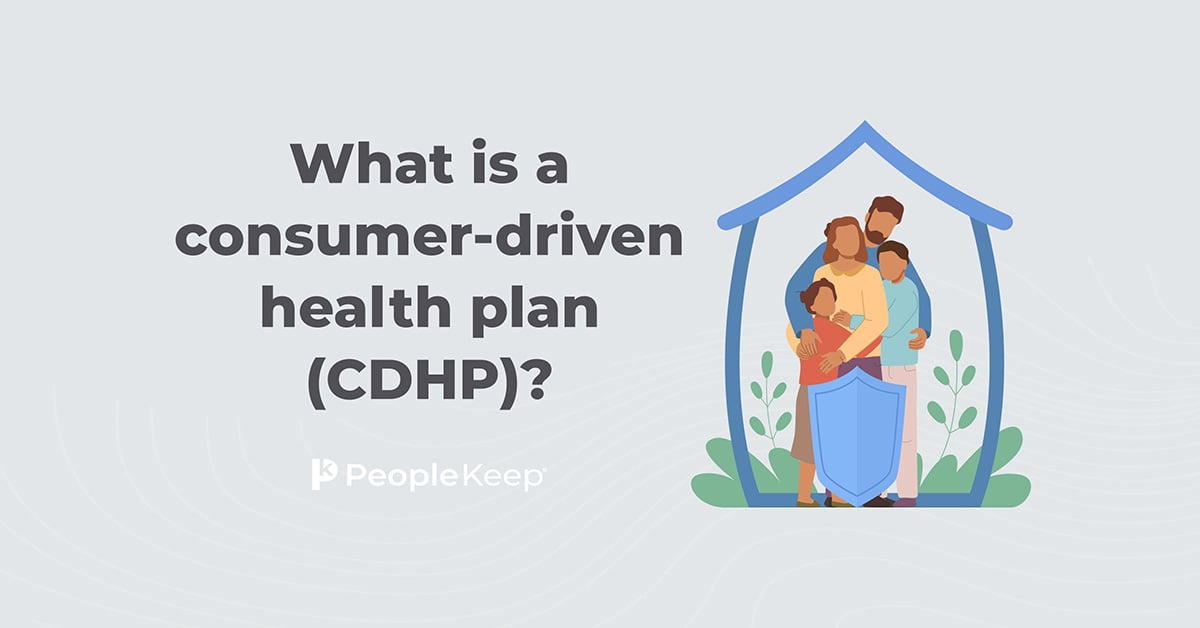Differences between HMO and PPO health plans
By Elizabeth Walker on April 17, 2024 at 6:53 AM
Whether you’re an individual searching for a health plan for yourself or your family, or an employer looking for a group health insurance policy for your staff, there are many types of health plans to choose from. Two popular types of health plans for individuals and employers alike are a health maintenance organization (HMO) policy and a preferred provider organization (PPO) plan.
Most people have a basic understanding of how health insurance works. However, knowing the differences between specific health plans, like an HMO and a PPO plan, is necessary to secure the right health coverage for you, your family, or your workers.
In this blog post, we’ll walk you through the key differences between HMO and PPO plans, review their pros and cons, and show you how each plan works with a health reimbursement arrangement (HRA).
Takeaways from this blog post:
- HMO plans typically only cover care from healthcare providers that are contracted with the insurance carrier. Because of this, these policies offer lower premiums and out-of-pocket costs.
- PPO plans offer more flexibility in choosing health providers and services than HMO plans. But, they often have higher premiums and deductibles, and require policyholders to file their own claims for out-of-network care, which can be complicated and time-consuming.
- Choosing between an HMO and PPO health plan depends on your budget and healthcare needs.
What is an HMO plan?
An HMO is a type of health plan where a group of network doctors, hospitals, and other medical care providers contract with an insurance provider to offer policyholders various covered services and items in exchange for a premium. Providers within the HMO network agree to provide care to policyholders at a reduced rate. In turn, policyholders pay their health insurance company a premium to keep their plan active.
In 2023, 13% of employees in the U.S. with health insurance coverage enrolled in an HMO plan1. Because these policies typically have lower premiums and out-of-pocket costs compared to other types of health plans, they can seem like an attractive option for those looking for coverage. But, the lower overall costs come with certain restrictions.
For example, policyholders must choose an in-network primary care provider (PCP) when they enroll in coverage. Their HMO also won’t cover the costs of out-of-network care or treatment from a specialist that occurred without a PCP referral, except if a policyholder needs emergency care.
What are the pros of an HMO plan?
Before determining if an HMO suits you or your organization, you must examine the pros and cons.
The following are some of the advantages of an HMO plan:
- You’ll have lower out-of-pocket costs: HMO plans typically have low premiums and copayments. In many instances, individuals may not have to meet an annual deductible before their insurer begins sharing their medical costs. Your plan will also typically cover in-network specialist care with only a small copay for services.
- You work with a primary care doctor: When you enroll in an HMO plan, you have to choose a PCP who will be your primary point person to reach out to when you need care. In return, they coordinate your care, manage your overall treatment, and make referrals for specialists.
- You may receive better care: Because they have a limited healthcare provider network, HMO members often know exactly where to go to get the care they need. Additionally, your PCP acts as your medical advocate, and you may develop a strong bond with them, resulting in you receiving better and more consistent care.
What are the cons of an HMO plan?
While these advantages of HMO plans may seem enticing, there are potential downsides that you should consider before enrolling.
The following are some disadvantages of HMO plans:
- You must visit in-network providers: If you want your HMO to cover the cost of your care, you must receive care from a specific network of providers in your area. While this can make your out-of-pocket costs more affordable, this restrictive requirement may not meet everyone’s needs. If you see a non-network provider, you’ll be responsible for your entire bill without the help of your insurer.
- No specialist visits without a referral: If you need to visit a specialist for treatment, you must ask your PCP for a referral for an in-network specialist beforehand. If your PCP doesn’t refer you, you must pay the entire cost of the bill alone, which can be expensive.
- Emergencies must meet certain conditions: If you’re traveling outside your network area and need treatment, your HMO plan will cover it if it’s a medical emergency. However, your policy will outline the situations that it considers an emergency. If your emergency doesn’t fit the criteria in your plan, you’ll have to pay the bill on your own.
What is the average cost of an HMO plan?
In 2023, the average annual premium for a group HMO plan was $8,203 for self-only coverage and $23,758 for family coverage2. Employers offering an HMO plan contributed $6,783 on average toward a self-only plan, and employees contributed $1,420. For family coverage, employers contributed $16,600, and employees contributed $7,158.
Like other types of health plans, HMO policies may have an annual deductible. A deductible is the set amount of money a plan participant must pay out-of-pocket before their insurer begins to cover their medical care costs. In 2023, the average deductible for an HMO plan was $1,200.
However, it’s important to mention that some HMO plans don’t have deductibles. KFF found that 33% of individuals enrolled in a self-only HMO don’t have a deductible3.
Lastly, the 2023 out-of-pocket maximum for an Affordable Care Act (ACA) Marketplace plan was $9,100 for self-only coverage and $18,200 for family coverage4. In 2024, the maximum out-of-pocket limit increased to $9,450 for individuals and $18,900 for families. These limits apply to all types of health plans in the individual, small group, and large group insurance markets.
What is a PPO plan?
A PPO policy is a type of health plan in which an insurance provider contracts with doctors, healthcare professionals, and medical facilities to create a list of “preferred” healthcare providers for policyholders. When individuals with a PPO plan get medical care from an in-network provider, their health insurer pays the provider at an agreed-upon reduced rate. From there, policyholders must pay their annual deductible, coinsurance, and copayments.
PPOs are the most common plan that employers offer. In 2023, 47% of individuals with a group health insurance plan have a PPO2. These plans are popular because they don’t require members to select a PCP before enrolling and enable members to choose from a larger variety of in-network providers than they can with an HMO plan.
Additionally, individuals can receive out-of-network care with a PPO policy. However, the out-of-pocket costs for these services are more expensive.
What are the pros of a PPO plan?
PPO plans offer several benefits that make getting medical care a convenient and positive experience. Let’s explore some of them below.
The following are some of the advantages of PPO plans:
- You have more freedom over your healthcare: PPO plans have a wide network of providers offering the same types of medical services with set similar prices. This lets you choose the providers, services, and items that best meet your needs. Additionally, PPO plans don’t require you to select a PCP upon enrollment, so you’ll save time and can start receiving medical care immediately.
- You don’t need to get referrals: Unlike an HMO, PPO plans don’t require a referral from a PCP to seek care from a specialist. Not having to complete this first step saves you time if you need to visit a specialist as soon as possible. Plus, you’ll likely find the specialist you need quickly and easily since you can access a larger network.
- You have access to out-of-network care: Like all health plans, receiving in-network care is best to keep your out-of-pocket costs low. However, unlike HMO plans that won’t cover any portion of your bill if you seek out-of-network care (except in a covered emergency), you can get out-of-network care when traveling out of your regular plan network area with a PPO policy. Your insurer will likely share some of the cost of this care with you; however, you may have to pay more out-of-pocket for non-preferred care.
What are the cons of a PPO plan?
Cost-conscious people should consider a few disadvantages to PPO plans that may make getting care more expensive.
Some disadvantages of a PPO plan are:
- Higher monthly premium costs: While they’re flexible and convenient, PPO plans have higher premiums. According to KFF, PPO plans had the highest annual premiums compared to HMOs and point-of-service plans (POS) in 2023. You’ll also have to pay more expensive medical bills if you receive care from an out-of-network provider.
- Costly deductibles and coinsurance: Unlike HMOs, PPO plans generally have a deductible, with only 10% of employees with a PPO plan not having one in 2023. If you do have a deductible, it’s likely to be more expensive than other plan types. While your insurer will share the cost with you, you’ll likely pay a greater coinsurance percentage for out-of-network providers.
- Filing your own claims can be tricky: When you visit an in-network provider, they’ll file your claim to your health insurance company on your behalf. But, if you receive out-of-network care, you’ll have to fill out the paperwork and file the claim yourself. PPO policyholders may find the claim filing process complicated if they’re not used to it or time-consuming if they frequently need out-of-network care from a specialist.
What is the average cost of a PPO plan?
In 2023, the average annual premium for a group PPO plan was $8,906 for self-only coverage and $25,228 for family coverage2. Employers contributed $7,399 toward a self-only plan, and employees contributed $1,507. For a family plan, employers contributed $18,120, and employees contributed $7,108. The average deductible for PPO plans was $1,281.
As mentioned above, PPO plans purchased on the ACA marketplaces also have a maximum out-of-pocket limit of $9,450 for self-only coverage and $18,900 for family plans.
What’s the difference between HMO and PPO plans?
To summarize how HMO and PPO plans differ, check out our quick chart.
|
Comparison point |
HMO plans |
PPO plans |
|
What is the average annual premium? |
Self-only coverage: $8,203 Family coverage: $23,758 |
Self-only coverage: $8,906 Family coverage: $25,228 |
|
What is the average maximum out-of-pocket limit? |
For 2024 ACA marketplace plans, the maximum limit is $9,450 for self-only coverage and $18,900 for family coverage. |
For 2024 ACA marketplace plans, the maximum limit is $9,450 for self-only coverage and $18,900 for family coverage. |
|
Does it require participants to choose a PCP? |
Yes |
No |
|
Does it require participants to get a referral to see a specialist? |
Yes |
No |
|
Does it have a deductible? |
Some plans do. |
Most plans do. |
|
Can participants access out-of-network care? |
Yes. But if they do, they’re responsible for paying the entire bill on their own unless the care was for an emergency. |
Yes. However, participants may have a higher coinsurance or medical bill. |
Can you use an HRA with an HMO or PPO plan?
Whether you have an HMO or PPO plan, you can leverage a health reimbursement arrangement (HRA) to lower out-of-pocket medical expenses. An HRA is a formal health benefit that allows employees to receive tax-free reimbursements for qualified out-of-pocket healthcare costs and sometimes insurance premiums. Only employers can launch and contribute toward an HRA.
Employers use an HRA to give their employees a monthly allowance to pay for medical costs. Once an employee buys an eligible item or service, they submit documentation showing proof of purchase, and their employer reimburses them up to their allowance amount. Employees can’t exceed their set monthly allowance. Additionally, unused HRA funds roll over monthly until the end of the year.
Regardless of whether an individual is enrolled in an HMO or PPO policy, an HRA can help them pay for their healthcare expenses.
The following are the types of HRAs that can work with an HMO or PPO:
- Qualified small employer HRA (QSEHRA): A QSEHRA is a stand-alone HRA for organizations with fewer than 50 full-time equivalent employees (FTEs) that don’t offer a group plan of any kind. QSEHRAs have annual maximum contribution limits but no minimum limits. Employee reimbursements will be tax-free if their individual health plan offers minimum essential coverage (MEC). Employers can reimburse employees for out-of-pocket expenses and health insurance premiums, including those for an HMO or PPO plan.
- Individual coverage HRA (ICHRA): An ICHRA is also a stand-alone HRA, but it’s available to employers of all sizes and has no contribution limits. Employees can choose to opt in or out of an ICHRA. But, they must have a qualifying form of individual health coverage to participate. Employers can set different allowances based on employee classes for added customization.
- Group coverage HRA (GCHRA): Also known as an integrated HRA, a GCHRA is for employers of any size who offer a group health plan. Only employees enrolled in their employer’s group plan can participate. Employees can receive reimbursements for eligible out-of-pocket costs their group plan doesn’t fully cover. While they have no maximum contribution limits, the IRS doesn’t allow reimbursements for monthly premiums.
No matter whether it’s used in coordination with an HMO or PPO plan, there’s an HRA that can help employees pay for their out-of-pocket medical costs and, sometimes, their health insurance premiums. An HRA is a popular alternative option over traditional health benefits because they’re budget-friendly for employers and flexible enough for every employee.
Conclusion
Choosing the right health insurance can significantly impact your budget and the quality of your medical care—whether you’re an individual or employer. An HMO may be your best bet if you’re looking for a plan with a low premium. However, a PPO plan provides extra flexibility if you need more control over your healthcare. That’s why researching these plans carefully, including their pros, cons, and average costs, is the best first step you can take before making a decision.
If you're an employer looking to provide your staff with a customizable health benefit, PeopleKeep has what you need. By offering your employees an HRA, you’ll be able to better support them and their families with their healthcare expenses for years to come.
- https://www.kff.org/report-section/ehbs-2023-section-5-market-shares-of-health-plans/
- https://www.kff.org/report-section/ehbs-2023-summary-of-findings/
- https://www.kff.org/report-section/ehbs-2023-section-7-employee-cost-sharing/#:~:text=GENERAL%20ANNUAL%20DEDUCTIBLES%20FOR%20WORKERS%20IN%20PLANS%20WITH%20DEDUCTIBLES
- https://www.healthcare.gov/glossary/out-of-pocket-maximum-limit/
Check out more resources
See these related articles

Pros and Cons of Pure Defined Contribution Healthcare
What are the Pros and Cons of Pure Defined Contribution Healthcare? Here are the pros and cons for small businesses and employees on defined contribution healthcare.

Why Health Insurance is THE New Consumer Product
Health insurance is a new consumer product - in fact, health insurance could be THE consumer product of 2015. Here's why.

What is a consumer driven health plan (CDHP)?
Looking for a healthcare plan that gives you more flexibility? Explore the concept of a consumer driven health plan (CDHP) and its advantages here.



